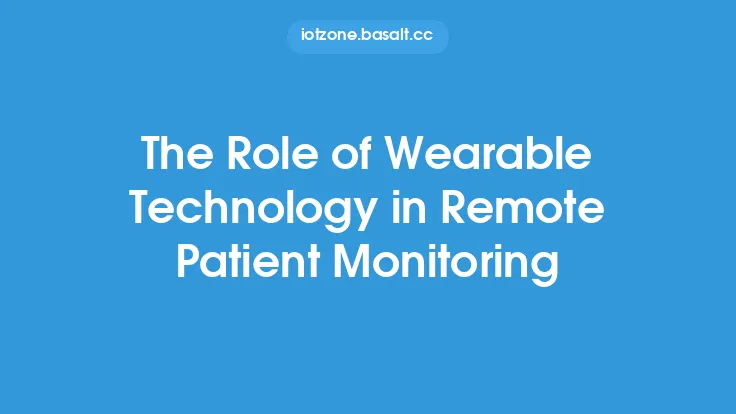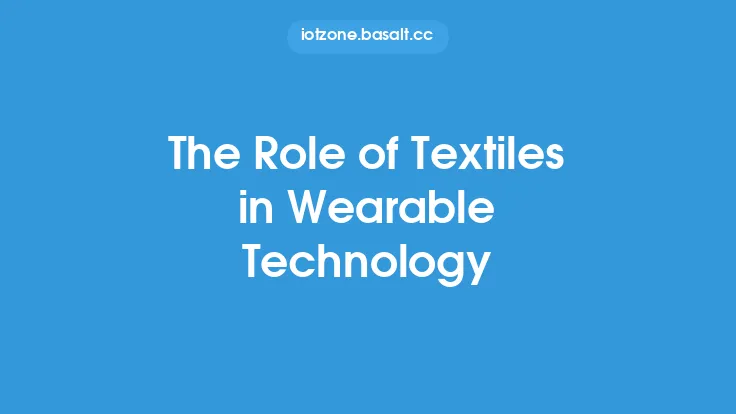The use of wearable sensors to track physical activities has become increasingly popular in recent years, with the rise of fitness trackers, smartwatches, and other wearable devices. These sensors are designed to monitor and record various aspects of physical activity, such as movement, distance, speed, and calories burned. The data collected by these sensors can be used to provide valuable insights into an individual's physical activity levels, helping them to set and achieve fitness goals, monitor their progress, and make informed decisions about their health and wellbeing.
Types of Wearable Sensors
There are several types of wearable sensors that can be used to track physical activities, including accelerometers, gyroscopes, magnetometers, and GPS sensors. Accelerometers measure the acceleration of an object, and are commonly used to track movement and activity levels. Gyroscopes measure the orientation and rotation of an object, and are often used in conjunction with accelerometers to provide more accurate measurements. Magnetometers measure the strength of magnetic fields, and can be used to track the direction and distance of movement. GPS sensors use satellite signals to determine the location and distance traveled, and are often used in outdoor activities such as running, cycling, and hiking.
How Wearable Sensors Work
Wearable sensors work by detecting and measuring various physical parameters, such as movement, pressure, and temperature. These measurements are then transmitted to a processing unit, which interprets the data and provides feedback to the user. The processing unit can be a dedicated chip or a smartphone app, and can perform various functions such as data analysis, filtering, and storage. The data collected by wearable sensors can be used to track a wide range of physical activities, including walking, running, swimming, and cycling. Some wearable sensors can also track more complex activities, such as jumping, dancing, and weightlifting.
Applications of Wearable Sensors
Wearable sensors have a wide range of applications in tracking physical activities, including fitness tracking, athletic performance monitoring, and health monitoring. Fitness tracking involves using wearable sensors to monitor and record physical activity levels, such as steps taken, distance traveled, and calories burned. Athletic performance monitoring involves using wearable sensors to track and analyze athletic performance, such as speed, distance, and power output. Health monitoring involves using wearable sensors to track and monitor various health parameters, such as heart rate, blood pressure, and body temperature.
Benefits of Wearable Sensors
The use of wearable sensors to track physical activities has several benefits, including improved fitness and health outcomes, enhanced athletic performance, and increased motivation and engagement. Wearable sensors can provide individuals with accurate and detailed information about their physical activity levels, helping them to set and achieve fitness goals, monitor their progress, and make informed decisions about their health and wellbeing. Wearable sensors can also provide athletes with valuable insights into their performance, helping them to optimize their training, improve their technique, and gain a competitive edge.
Limitations and Challenges
Despite the many benefits of wearable sensors, there are also several limitations and challenges associated with their use. One of the main limitations is accuracy, as wearable sensors can be affected by various factors such as movement, orientation, and environmental conditions. Another limitation is data quality, as wearable sensors can generate large amounts of data that require processing and analysis. There are also challenges associated with data privacy and security, as wearable sensors can collect sensitive information about an individual's physical activity levels and health parameters.
Future Developments
The use of wearable sensors to track physical activities is a rapidly evolving field, with new technologies and innovations emerging all the time. One of the most significant developments is the integration of artificial intelligence and machine learning algorithms into wearable sensors, which can provide more accurate and detailed insights into physical activity levels and health parameters. Another development is the use of wearable sensors in conjunction with other technologies, such as augmented reality and virtual reality, to create immersive and interactive fitness experiences. There are also developments in the use of wearable sensors for medical applications, such as monitoring and tracking chronic diseases, and providing personalized feedback and recommendations for treatment and management.
Conclusion
In conclusion, wearable sensors play a vital role in tracking physical activities, providing individuals with accurate and detailed information about their fitness and health outcomes. The use of wearable sensors has several benefits, including improved fitness and health outcomes, enhanced athletic performance, and increased motivation and engagement. However, there are also limitations and challenges associated with their use, such as accuracy, data quality, and data privacy and security. As the field continues to evolve, we can expect to see new technologies and innovations emerge, such as the integration of artificial intelligence and machine learning algorithms, and the use of wearable sensors in conjunction with other technologies.




